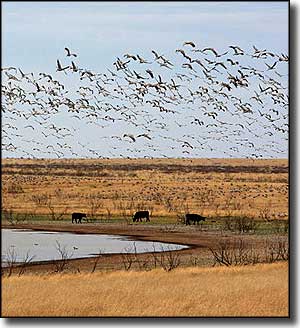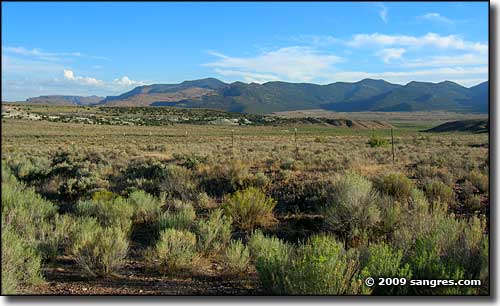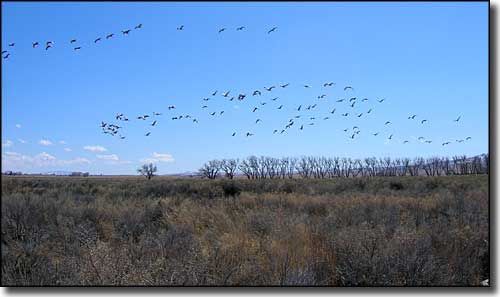
The US Fish & Wildlife Service manages the 586 national wildlife refuges and 37 wetland management districts that make up the National Wildlife Refuge system. That's a total of almost 96 million acres of property devoted to the protection and preservation of wildlife. Among these properties are coastal and marine areas, wetlands, prairies, and temperate, boreal and tundra forests. More than 200 species of fish, 250 species of reptiles and amphibians, 220 species of mammals and 700 species of birds call these properties home at one time or another. 75 properties also contain designated wilderness areas, to a total of more than 20 million acres. Most National Wildlife Refuges are also managed to provide some form of wildlife-dependent outdoor recreation, be it hunting, fishing, wildlife observation, bird-watching, environmental education or photography. Many refuges also contain "special management areas:" Wild and Scenic Rivers, Historic Sites, Research Natural Areas, Cultural Resource Sites, National Trails and National Natural Landmarks. Because some refuges contain habitat critical to the survival of endangered and threatened species, these refuges may be closed to public use. The National Wildlife Refuge system saw more than 75 million visits from more than 41 million visitors in 2008.
Arizona
- Bill Williams River National Wildlife Refuge
- Buenos Aires National Wildlife Refuge
- Cabeza Prieta National Wildlife Refuge
- Cibola National Wildlife Refuge
- Havasu National Wildlife Refuge
- Imperial National Wildlife Refuge
- Kofa National Wildlife Refuge
- Leslie Canyon National Wildlife Refuge
- San Bernardino National Wildlife Refuge
Colorado
- Alamosa National Wildlife Refuge
- Arapaho National Wildlife Refuge
- Baca National Wildlife Refuge
- Browns Park National Wildlife Refuge
- Monte Vista National Wildlife Refuge
- Rocky Flats National Wildlife Refuge
- Rocky Mountain Arsenal National Wildlife Refuge
- Two Ponds National Wildlife Refuge
Idaho
- Deer Flat National Wildlife Refuge
- Kootenai National Wildlife Refuge
- Southeast Idaho National Wildlife Refuge Complex
- Bear Lake National Wildlife Refuge
- Camas National Wildlife Refuge
- Grays Lake National Wildlife Refuge
- Minidoka National Wildlife Refuge - Oxford Slough Waterfowl Production Area
Montana
- Benton Lake National Wildlife Refuge
- Bowdoin National Wildlife Refuge
- Black Coulee National Wildlife Refuge
- Creedman Coulee National Wildlife Refuge
- Hewitt Lake National Wildlife Refuge
- Lake Thibadeau National Wildlife Refuge - Charles M. Russell National Wildlife Refuge
- Hailstone National Wildlife Refuge
- Halfbreed Lake National Wildlife Refuge
- Lake Mason National Wildlife Refuge
- War Horse National Wildlife Refuge
- UL Bend National Wildlife Refuge - Lee Metcalf National Wildlife Refuge
- Medicine Lake National Wildlife Refuge
- Lamesteer National Wildlife Refuge - National Bison Range
- Lost Trail National Wildlife Refuge
- Ninepipe National Wildlife Refuge
- Pablo National Wildlife Refuge
- Swan River National Wildlife Refuge - Red Rock Lakes National Wildlife Refuge
Nevada
- Desert National Wildlife Refuge
- Ash Meadows National Wildlife Refuge
- Moapa Valley National Wildlife Refuge
- Pahranagat National Wildlife Refuge - Ruby Lake National Wildlife Refuge
- Stillwater National Wildlife Refuge
- Anaho Island National Wildlife Refuge
- Fallon National Wildlife Refuge - Sheldon National Wildlife Refuge
New Mexico
- Bitter Lake National Wildlife Refuge
- Bosque del Apache National Wildlife Refuge
- Grulla National Wildlife Refuge
- Las Vegas National Wildlife Refuge
- Maxwell National Wildlife Refuge
- San Andres National Wildlife Refuge
- Sevilleta National Wildlife Refuge

Grulla National Wildlife Refuge, New Mexico
Utah
- Bear River Migratory Bird Refuge
- Fish Springs National Wildlife Refuge
- Ouray National Wildlife Refuge
Wyoming
- Managed by Arapaho National Wildlife Refuge (in Colorado)
- Bamforth National Wildlife Refuge
- Hutton Lake National Wildlife Refuge
- Mortenson Lake National Wildlife Refuge
- Pathfinder National Wildlife Refuge - National Elk Refuge
- Seedskadee National Wildlife Refuge
- Cokeville Meadows National Wildlife Refuge


